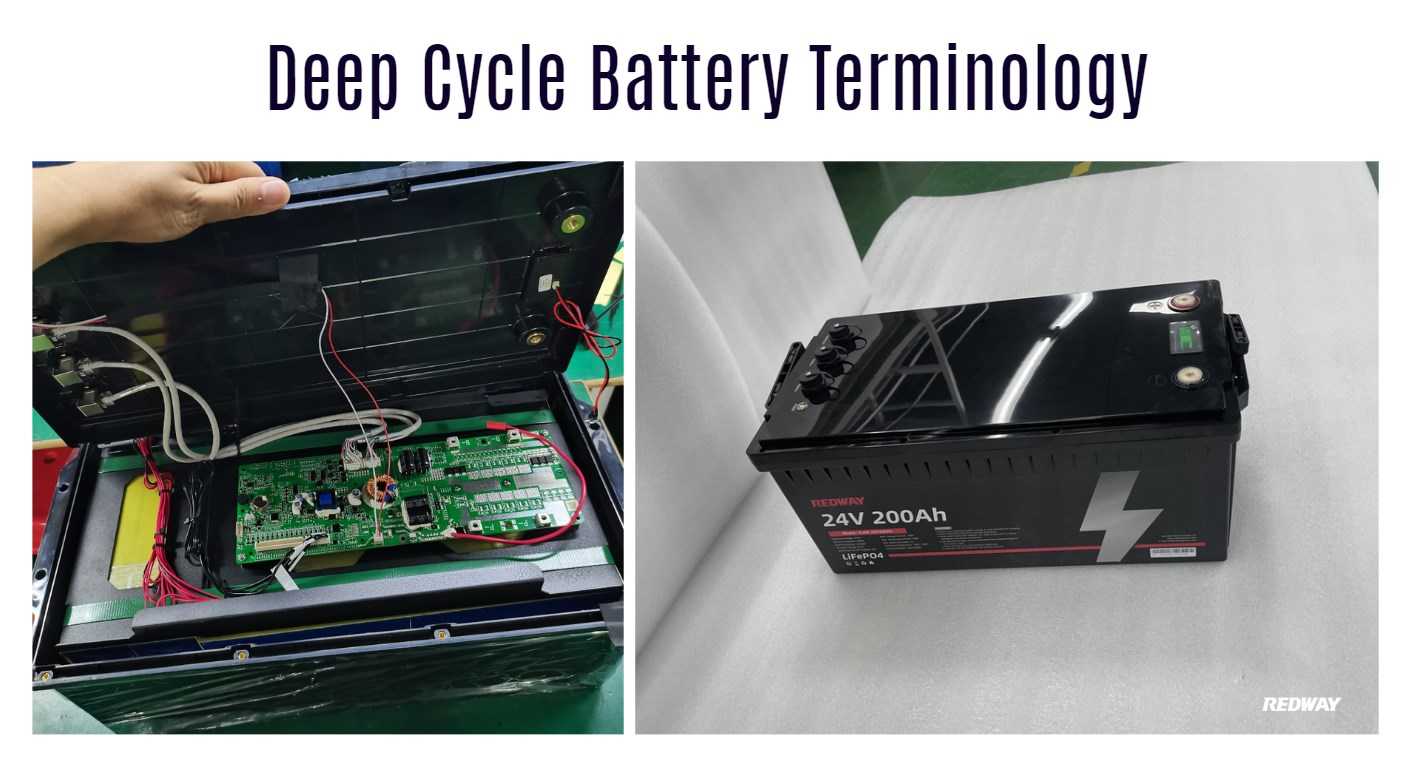Deep cycle batteries are specialized energy storage devices designed for sustained power output over extended periods. Unlike standard automotive batteries, which deliver short bursts of energy, deep cycle batteries can be deeply discharged and recharged repeatedly without significant degradation. This article will clarify essential terminology related to deep cycle batteries, their types, and applications.
Key Terminology in Deep Cycle Batteries
- Depth of Discharge (DoD):
- Depth of Discharge refers to the percentage of a battery’s capacity that has been used. For deep cycle batteries, a typical DoD is around 70-80%, meaning they can be discharged down to this level before requiring a recharge. Maintaining a lower DoD can significantly enhance the battery’s lifespan.
- Cycle Life:
- Cycle life is the number of complete charge and discharge cycles a battery can undergo before its capacity falls below 80% of its original value. Deep cycle batteries are designed for numerous cycles, typically ranging from 500 to 2000 cycles, depending on usage and maintenance.
- Battery Capacity:
- Battery capacity is measured in ampere-hours (Ah) and indicates the total amount of energy a battery can deliver over time. For example, a 100Ah battery can theoretically provide 100 amps for one hour or 10 amps for ten hours.
- Charging Voltage:
- Each type of deep cycle battery has a specific voltage at which it should be charged. Overcharging can lead to gassing, where excess gas escapes from the battery, reducing its efficiency and potentially causing damage.
- Internal Resistance:
- Internal resistance refers to how much a battery resists energy flow during charging and discharging. Lower internal resistance results in better performance and efficiency, while high resistance can lead to energy loss as heat.
Types of Deep Cycle Batteries
- Flooded Lead-Acid Batteries:
- These are the most common type of deep cycle batteries. They require regular maintenance, such as checking electrolyte levels and adding distilled water. They are relatively inexpensive but can be sensitive to overcharging.
- Absorbent Glass Mat (AGM) Batteries:
- AGM batteries are sealed and maintenance-free, making them easier to use than flooded types. They have lower internal resistance and can handle higher discharge rates, but they tend to be more expensive.
- Gel Batteries:
- Gel batteries contain a thickened electrolyte that prevents spillage and allows for safer operation in various orientations. They are also sealed and maintenance-free but may have slightly lower discharge rates compared to AGM batteries.
- Lithium-Ion Batteries:
- Lithium-ion deep cycle batteries offer several advantages over traditional lead-acid types, including longer lifespan, lighter weight, and deeper discharge capabilities without damage. However, they come at a higher initial cost.
Applications of Deep Cycle Batteries
Deep cycle batteries are commonly used in various applications that require reliable power over extended periods:
- Solar Energy Systems: They store energy generated from solar panels for later use.
- Electric Vehicles: Used in golf carts and electric bikes for efficient power management.
- Marine Applications: Powering boats and other marine equipment where consistent energy is essential.
- Backup Power Systems: Providing reliable power during outages for homes or businesses.
Maintenance Tips for Deep Cycle Batteries
- Regular Inspections: Check fluid levels in flooded batteries regularly and ensure terminals are clean.
- Proper Charging Practices: Use chargers designed for your specific battery type to prevent overcharging or undercharging.
- Temperature Management: Keep batteries in a stable environment; extreme temperatures can affect performance and lifespan.
- Avoid Deep Discharges: Regularly discharging below 50% can significantly shorten the battery’s life.
Latest News
- The demand for deep cycle batteries is increasing as more consumers turn to renewable energy solutions like solar power.
- Recent innovations in lithium-ion technology have led to enhanced performance metrics, making them more competitive against traditional lead-acid options.
- Environmental regulations are encouraging manufacturers to improve recycling processes for lead-acid batteries, promoting sustainability within the industry.
Redway Expert Comment
In our extensive experience at Redway Battery, understanding deep cycle battery terminology is crucial for selecting the right battery for your needs. Whether you opt for lead-acid or lithium-ion technologies, knowing terms like Depth of Discharge (DoD) and Cycle Life will empower you to make informed decisions that enhance performance and longevity. As technology evolves, we anticipate even greater advancements in efficiency and sustainability.” In conclusion, understanding deep cycle battery terminology is essential for anyone looking to utilize these powerful energy storage solutions effectively. By familiarizing yourself with key terms like Depth of Discharge, Cycle Life, and Battery Capacity, you can make informed choices that ensure optimal performance and longevity of your deep cycle batteries.





